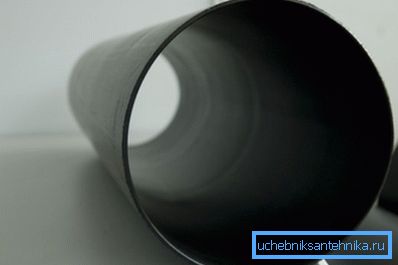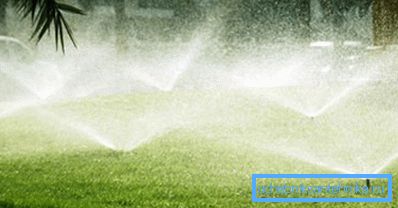Polyethylene pipes: types and their features
Polyethylene pipes are widely used in the plumbing industry primarily due to their low cost, practicality and ease of operation. Polyethylene pipes PND successfully displace metal counterparts from the pipelines of water supply and sewage systems. Why this happens, we will try to answer in this article.

General provisions

Polyethylene pipes according to GOST 18599 2001 are made by polymerizing ethylene in a slurry or gas phase method at low or medium pressure, which guarantees the presence of many advantages:
Merits
- Low price. Saving in everything today for many is in the first place, and the products in question make it possible to avoid unnecessary costs in arranging essential engineering systems.
- Ease of processing and installation work with their own hands. Which gives another opportunity to save the family budget.

- Highly resistant to aggressive substances such as acids, alkalis and solvents. Thanks to what they are so well suited for arranging sewer lines.

- Resistance to corrosive processes. Constant contact with liquids, metal products leads to destruction, but this does not happen with polyethylene.

- A light weight. Simplifies installation work and eliminates the need for reinforced fasteners.
- Durability. With proper operation has not less than fifty years.
disadvantages
In the case of operation of the products in question, one should also remember their weak points:
- Low melting point.
Tip: It is not recommended to use polyethylene pipes for laying the heating system. In particularly cold winters, it is possible to supply coolant with a superior allowable temperature, which will inevitably lead to an accident.
- Relatively weak resistance to mechanical stress.
Tip: eliminate the installation of plastic piping under the carriageway, as this material will not withstand such heavy loads.
Classification
On polyethylene pipes you can find the following sets of letters:
| Abbreviation | Value |
| SDR | The ratio of the outer diameter of the product to the thickness of its wall, that is, the larger the number following the designation, the finer the structure of the pipe |
| PE | The brand of the product, the most common today is 80 and 100 |

From the table we see that, more often on the counters of specialized stores, two brands of HDPE pipes can be found. Let's take a look at their main differences:
| Mark | Special features |
| PE-80 |
|
| PE-100 |
|
And now let's look at some of the most popular models:
PE 80 SDR 21

Scope of application:
- Low pressure and non-pressure sewer systems.
- Cold water supply.
The relatively small thickness of the walls excludes the arrangement of gas and trunk pipelines with their help, in order to avoid premature accidental destruction.
PE 80 SDR 17
The average ratio of the size of the cross section to the wall thickness ensures the optimal combination of price and quality, which in turn greatly promotes these products when laying communications of a low-rise building.
This is especially true of such systems:
- Water supply with drinking water.
- Water supply of economic value.
- Irrigation systems for the garden plot.

PE 80 SDR 13.6

High technical qualities and an increased operating life in comparison with other samples make these pipes most demanded when installing systems for cold durable water supply.
PE 100 SDR 26

Due to their high density and resistance to cracking, such products are excellent for creating pipelines transporting drinking or household liquids in urban and country conditions. Widely used in breweries and wineries.
PE 100 SDR 21

There are two distinctive features:
- Complete inertness to the transported liquid. That is, does not affect the taste.
- Special tips for polyethylene pipes, allowing to make connections not only with plastic, but also with metal connections.
These qualities contribute to their widespread use in high-rise buildings.
PE 100 SDR 17

Instructions for the manufacture of products with such markings suggest the use of new technologies, which allows you to create high-strength pipes with a thin wall that perfectly cope with the arrangement of pressure water pipes and gas pipelines, which are distinguished by their great length.
Corrugated

Separately, it is also worth mentioning the corrugated product, which serves to protect and isolate power and information lines, and in some cases when installing sewers. Due to the increased flexibility, chemical inertness and fire resistance, such a pipe fully copes with its tasks.
Conclusion

Pipes made of polyethylene have many advantages. First of all, they are cheap, wear-resistant and durable. Marking on their walls will help you choose the most suitable product for a particular case. To do this, it will be enough for you to familiarize yourself with the above recommendations.
The video in this article will provide you with more information. The choice of products from polyethylene is a great opportunity to save the family budget.